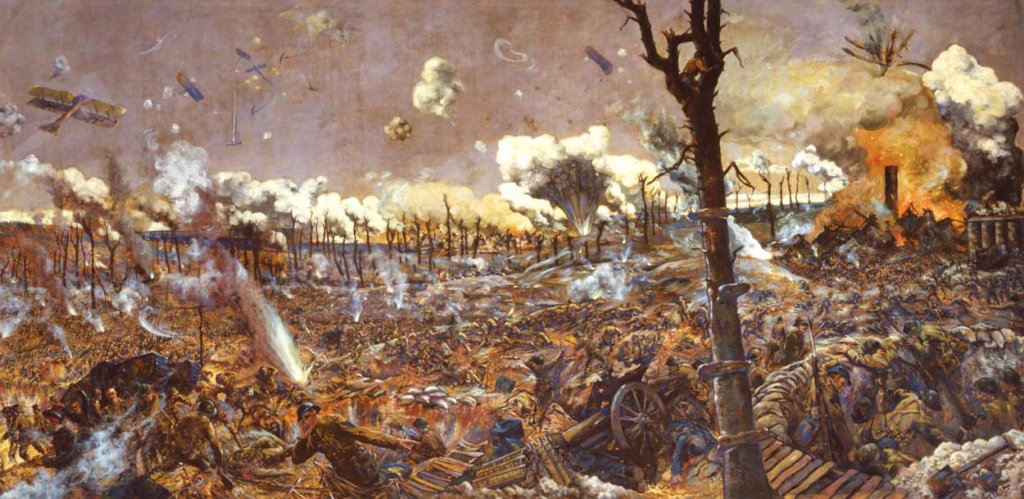
depiction of the fight for the town of Courcelette, France, in September 1916, during the Battle of the Somme. [Louis Alexander Weirter/CWM/1971100261-0788]
The Battle of the Somme would become known as one of the bloodiest and most futile military campaigns in history. For two years, there had been a stalemate along the trenches of the Western Front, with both the Allies and Germans firmly dug in. The idea to launch a massive offensive to break the deadlock came from General Douglas Haig, commander of the British troops in France, and Joseph Joffre, commander-in-chief of the French forces. It would prove to be one of the worst decisions of the Great War.
“We know very well that we are heading to the slaughterhouse.”
On July 1, 1916, 100,000 British troops marched into no man’s land. More than 57,000 were killed or wounded that day, many of them cut down by machine-gun fire. It was the largest single-day loss of life in British military history. The Newfoundland Regiment (still part of the British Expeditionary Force then) suffered catastrophic losses at the village of Beaumont-Hamel at the northern end of the front. Of some 800 soldiers, more than 300 were killed, and only 68 survived unscathed.
The Canadian Corps joined the battle on Aug. 30. Two weeks later, Quebec’s 22nd (French Canadian) Battalion (later named the Royal 22e Régiment) was ordered to capture Courcelette, a village in the Somme River valley that was occupied by Germans. It was a suicide mission. The Van Doos, as they are known (a play on vingt-deux), were the only active francophone regiment at the front.
“We know very well that we are heading to the slaughterhouse,” wrote Lieutenant-Colonel Thomas-Louis Tremblay, their commander. “It must succeed, for the honour of all the French Canadians whom we represent in France.” Against great odds, the Van Doos were successful, taking Courcelette and holding it for three days and nights while surrounded by Germans.
Tremblay was right about the cost. Sergeant Francois-Xavier (Frank) Maheux of the 21st Battalion (Eastern Ontario) wrote afterward to his wife: “All my friends have been either killed or wounded…it is worse than hell here. For miles around, corpses completely cover up the ground…we were walking on dead soldiers.”
The Somme Offensive dragged on for five months, ending on Nov. 18. What stopped it wasn’t a decisive victory, but the weather; the rain and snow made fighting impossible. The ground became a sea of mud that swallowed up tanks and men.
In the end, the Allies had gained 13 kilometres of territory that held no strategic purpose. They lost more than 600,000 men. The Germans lost some 440,000. Of the 100,000 Canadians who took part, 24,000 were dead or wounded. The Germans called the battle das Blutbad—the blood bath.
Joffre lost his command because of the debacle (though it was restored by Georges Clemenceau, president of the French commission on foreign affairs). Haig kept his job, but suffered severe criticism. The Battle of the Somme left a lasting mark on all who were there and changed the way trench warfare was conducted.
Advertisement





















